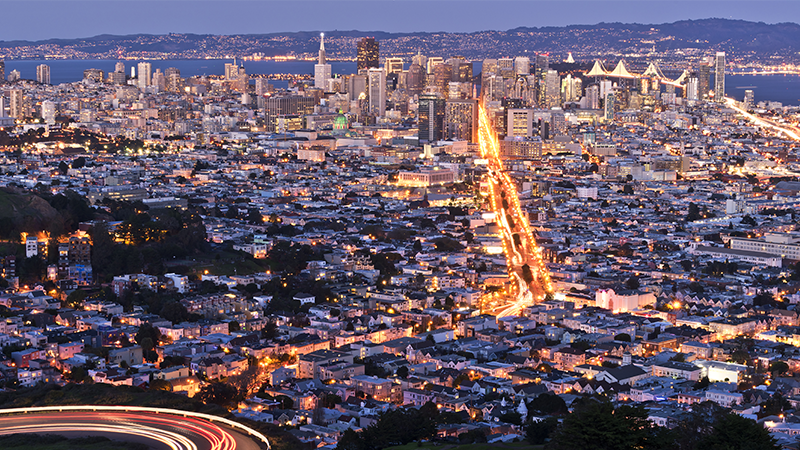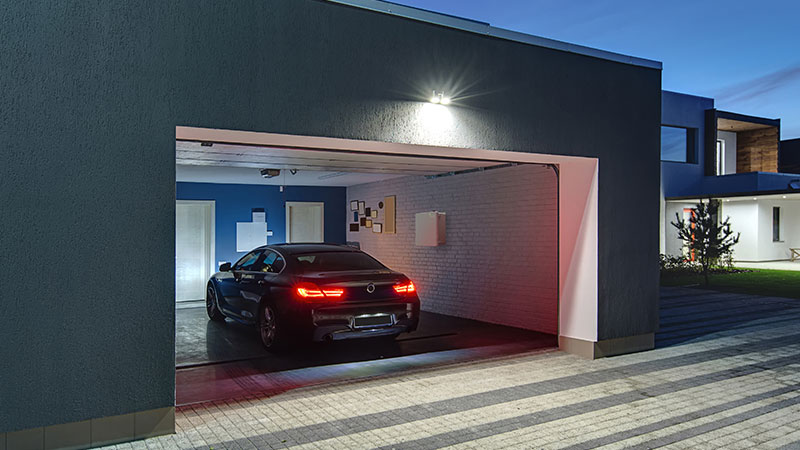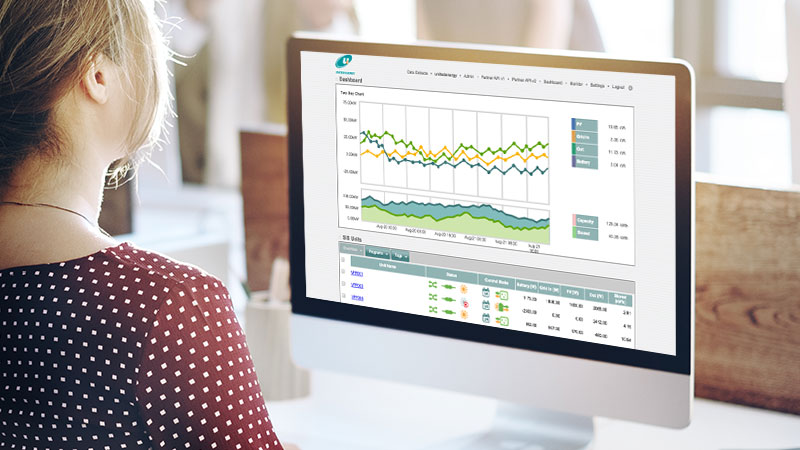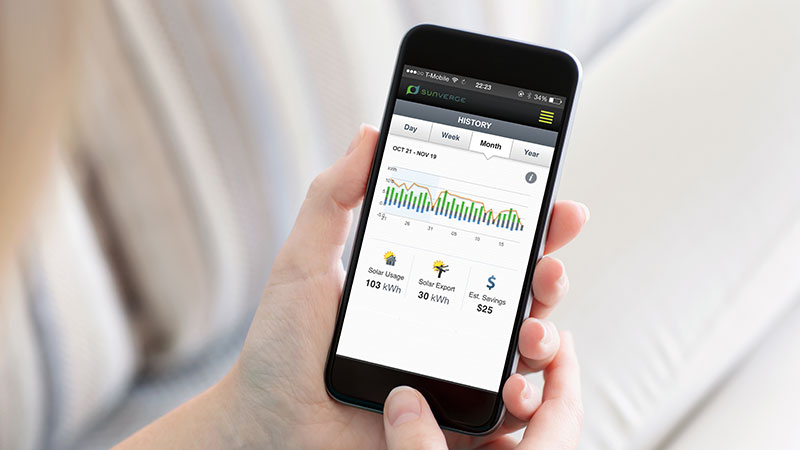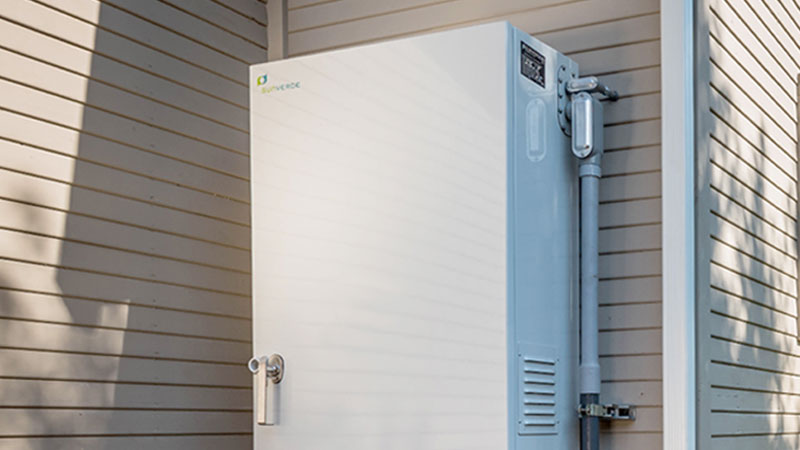Hurricane Maria created immense devastation in Puerto Rico, leaving the island and its people facing a long recovery process. Crucially, its electric grid suffered such widespread damage that, a month after the storm, 75 percent of the island remains without electricity, and it could take up to six months before all the power is restored.
There is little the average resident can do but wait. While thousands of diesel powered generators have been delivered to the island, only the wealthy can afford to purchase and operate them. Fuel is in short supply, and the units are the target of thieves, as they have been in the wake of earlier Caribbean hurricanes.
Regardless of its location, no city is immune from large scale outages like this. In May, a distribution substation caught fire in San Francisco, leaving 90,000 PG&E customers without power for as long as seven hours. (One of those customers was my sons’ elementary school, which was hosting hundreds of elderly visitors for annual Grandparents Day. Without power for the elevators, wheelchair-bound and walker-dependent guests had to be carried on numerous flights of darkened stairs.)
In the midst of these outages, there are pockets of self-created resiliency.
Last year, Fidencio Aldamuy, a customer and solar installer for New Energy Puerto Rico installed solar panels and a 19.4 kWh Sunverge One energy storage system at his home. It replaced a fossil-fuel powered generator for which he would now not be able to obtain fuel. Amazingly, his rooftop solar panels survived the storm, and he has not only been able to maintain power at his home on the island, but also to share that power with a neighbor. Likewise, Tesla Powerwall customers in Florida also report having power following recent hurricanes.
Highly Resilient City of the Future
Imagine what might happen if such distributed power was installed at publicly owned facilities and resources. Every school, every police and fire station, along with critical intersections, could be equipped with an uninterruptable power supply in the form of PV panels and lithium-ion-based energy storage systems. Public spaces, critical street lights and businesses would remain illuminated. These fleets of batteries would be controlled via a virtual network operating center that would ensure the batteries are fully charged during the day and powering critical infrastructure during the night.
This highly resilient city of the future would never need to “refuel” individual generators, field complaints from neighbors about the noisy, fume spewing diesel generators or worry about thieves. When these batteries aren’t providing backup power, they can be aggregated to create a virtual power plant, reduce peak load on the local distribution feeder and provide other grid services. This could provide considerable energy resources for the grid: For example, there are more than 670,000 street lights alone in PG&E’s territory. Add to that traffic signals and public facilities, and there would be millions of distributed units available for highly flexible aggregation.
Electric Utilities and Cities Plan for Storage
Several electric utilities and city planners are already thinking about the important role storage can play in making their cities more energy efficient and resilient to power outages. A large city in California is actively installing distributed energy storage systems in police and fire stations to provide an uninterrupted power supply during extended outages. The city planners are also exploring the possibility of equipping public restrooms in parks and other common areas with solar and storage to improve safety and the facility’s usefulness during outages.
Hartley Nature Center, which serves more than 25,000 visitors a year, in Duluth, Minnesota, partnered with the Clean Energy Group and Minnesota Power to install a Sunverge One to provide reliable backup power to meet operational needs during power outages. Storing power from the center’s solar panels, this installation—the first of its kind in the state — ensures vital Center operations never miss a beat, even when the grid goes down. The Sunverge One also allows the Center to serve as a community charging resource during times of disaster, keeping citizens connected with the people they need to contact.
Another application for distributed energy storage is gas stations. A large percentage of the 114,000 gas stations in the US have electric fuel pumps, so when the grid goes down, the pumps are inoperable. Earlier this year, the Massachusetts Clean Energy Center (MassCEC) issued a request for ideas to make local gas stations more resilient during grid outages. By outfitting each station with solar and storage, the lights and pumps keep working when the grid goes down. Following Hurricane Sandy in 2012, New York went a step further and now requires gas stations in critical areas to have backup electricity.
Importance of resiliency when 1 in 3 cars is electric
In twenty years, BNEF estimates 54 percent of new car sales and 33 percent of the global car fleet will be electric. While EV sales to 2025 will remain relatively low, BNEF analysts expect an inflection point in adoption between 2025 and 2030 as EVs become economical on an unsubsidized total cost of ownership basis across mass-market vehicle classes. This kind of EV growth could add 11,000 GWh of new load to the US grid according to researchers at the Rocky Mountain Institute (RMI). Reliable backup power will become increasingly critical when our transportation depends on it. Several states are taking advantage of Volkswagen’s $3 billion environmental mitigation trust to build out EV charging infrastructure, including pairing solar and storage on charge stations. The trust, which was created as part of Volkswagen’s settlement with the US government for use of emissions testing defeat devices, is intended to fund State projects that mitigate effects of higher emission levels.
Given the demonstrated lack of resiliency in the grid today, and the inevitability of more and more severe outages, the need to deploy distributed energy resources exists today. As we move into the future, with even more complex energy demands, we’ll need that resilient city of the future.
Sarah Singleton is senior vice president of marketing and regulatory affairs at San Francisco-based Sunverge Energy, a leading provider of software for managing energy storage systems and other distributed energy resources. Sunverge enables homeowners and small businesses to efficiently manage their own renewable energy generation and helps utilities, retailers and solar power providers aggregate those renewable power sources into virtual power plants across neighborhoods, communities and entire service areas.
The post originally published on meetingoftheminds.com, a platform that brings together urban sustainability and technology leaders to share knowledge and build lasting alliances.
